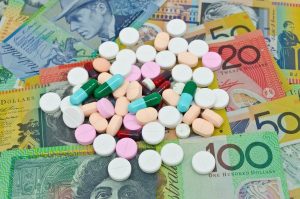 I love Radio National in the summer. They give their regular presenters a break and play reruns of the most popular shows and segments of the year. A kind of annual ‘RN Greatest Hits’. So last Saturday we heard on Ockham’s Razor—home of snappy, topical, sciencey talks—an account by cancer researcher Dr Fiona Simpson of the University of Queensland, of the uncertainty of securing funding for even the most promising of research projects.
I love Radio National in the summer. They give their regular presenters a break and play reruns of the most popular shows and segments of the year. A kind of annual ‘RN Greatest Hits’. So last Saturday we heard on Ockham’s Razor—home of snappy, topical, sciencey talks—an account by cancer researcher Dr Fiona Simpson of the University of Queensland, of the uncertainty of securing funding for even the most promising of research projects.
There’s a drug, an antibody, given to people with head and neck cancers. It’s called Cetuximab. Of patients treated, 15% respond; the rest just get side-effects but no benefit. It costs the government $60,000 to treat each patient—whether they respond or not.
Dr Simpson’s quest was to find a way to predict who will respond and who won’t, potentially saving a heap of money, not to mention the unnecessary and debilitating side-effects for that 85% of patients who won’t benefit. It didn’t take her long—she discovered a test with 100% correlation. The next step was to secure funding for a large scale trial. But, ‘I couldn’t get any of the pharma companies interested in helping to develop the prediction,’ she said, ‘because it would have cost them 85% of their sales.’
Dr Simpson kept her lab running with funding from sources as diverse as Rotary, sausage sizzles, Cancer Council Queensland, the National Breast Cancer Foundation, the Princess Alexandra Hospital Research Foundation’s corporate sponsors … and Coca Cola. Eventually she stumbled upon a drug that would make all those tumours receptive to treatment. Again, severe ennui from Big Pharma. The drug—Stematil, an anti-emetic in use for decades—was off patent so wouldn’t be making (enough) money for anyone, even when used at the high doses required. Dr Simpson: ‘Nobody told me, when they said to fix cancer in these patients, that it had to make a bunch of people money.’
The professor’s talk brought to mind a paper published by investment bank Goldman-Sachs last year. Hardly a murmur was raised when they put in writing what many had suspected for so long: discovering cures is not a viable business model for companies that develop and manufacture drugs. This is your bank manager’s advice—don’t even think about a cure for those diseases that keep patients on a drip-feed of profitable drugs for years or decades. Like MS, for instance: you get diagnosed young, go on an expensive medication that keeps you hovering on that fine line between illness and health for decades—then you die with MS, at a reasonably advanced age. It’s a goldmine for the pharmaceutical companies. Who’d want a cure? Us—at the risk of sounding ungrateful. But governments have reined in research spending, leaving the bulk of it to Big Pharma—the neoliberal health model, which puts shareholders first and patients last. It’s sick.
Lately I heard about a trial, also being run from Brisbane, for a treatment for secondary progressive MS—my brand. It’s looking at using patients’ own immune cells to attack a pathogen (Epstein Barr virus) that may be causing damage to nerve cells. It’s exciting because most MS research over the last few decades has focused on relapsing remitting MS, the more common type. That’s where the money is. No-one’s making any money when we recruit our own T-lymphocytes, but Big Pharma’s not losing money either because there have never been any expensive drugs for us that we’ll stop taking if this works. No-one will be getting in the way.
I’ve started making enquiries and Dr G has referred me to a neurologist in Sydney who was a principal investigator on an earlier (successful) trial of this treatment. I looked through the list of criteria for inclusion in that initial trial and, if the criteria are the same for the next one, it seems I’m just on the edge of being excluded due to my advanced condition. I’ll try not to deteriorate (business as usual) and hope they don’t waste time. Wish me luck.
indeed my friend good luck
I don’t know where Dr Simpson was that day – I had reason to research a little of the breast cancer story some years – as per a sister who fought the good fight only to leave us at the age of 48 – imagine my horror to learn about the hijacking of ‘pink’ and how much money this makes for the very cosmetic companies that sell products containing nasty carcinogens- oh estee lauder has mud on her face..
Thanks Sandra. Yes, my brother died of cancer in 2017, at 49. Our ‘health’ system has a lot to answer for. xxx